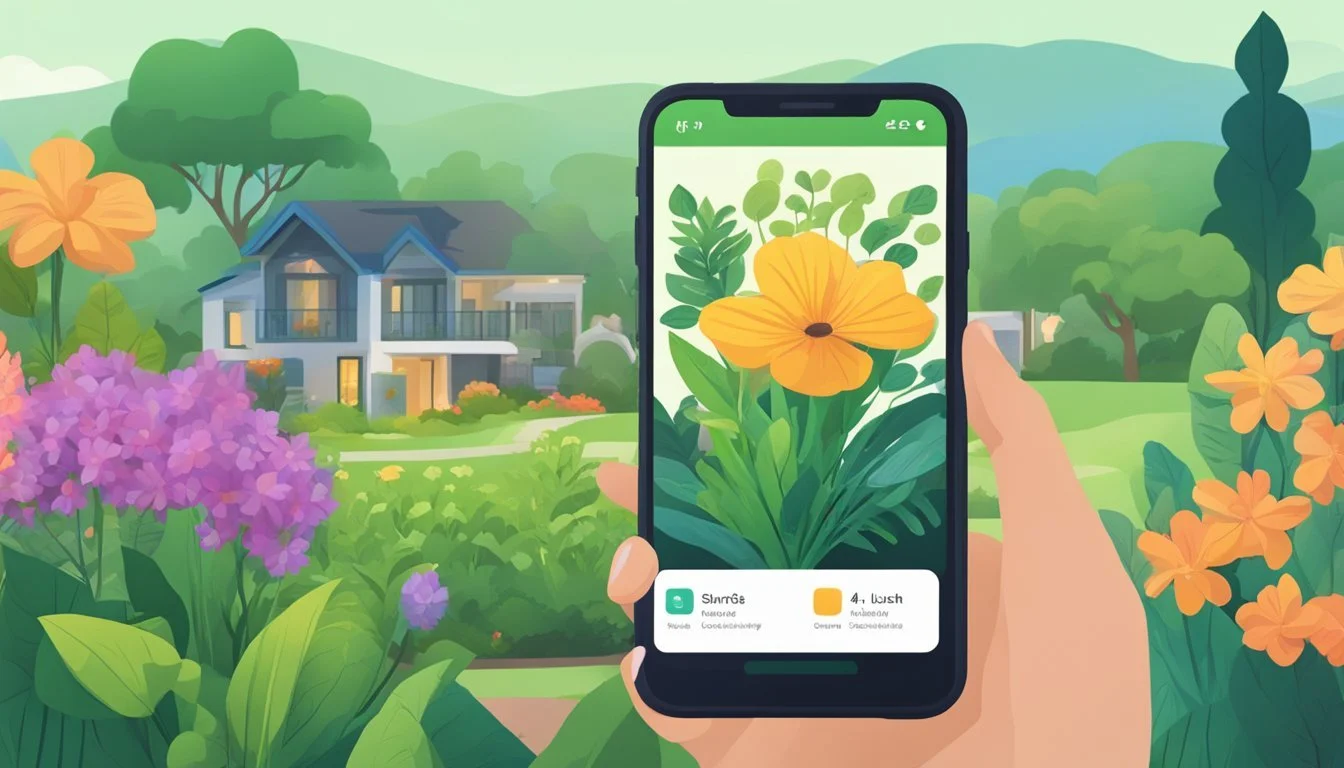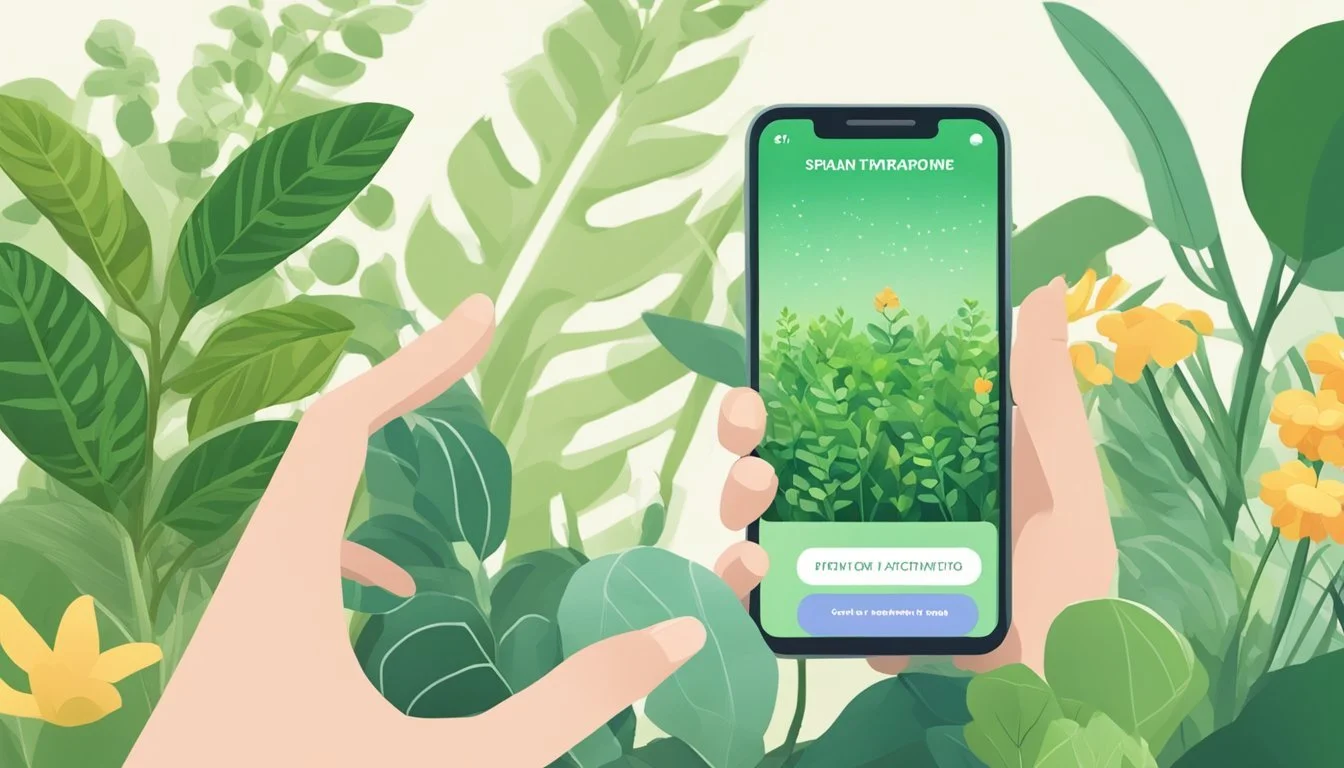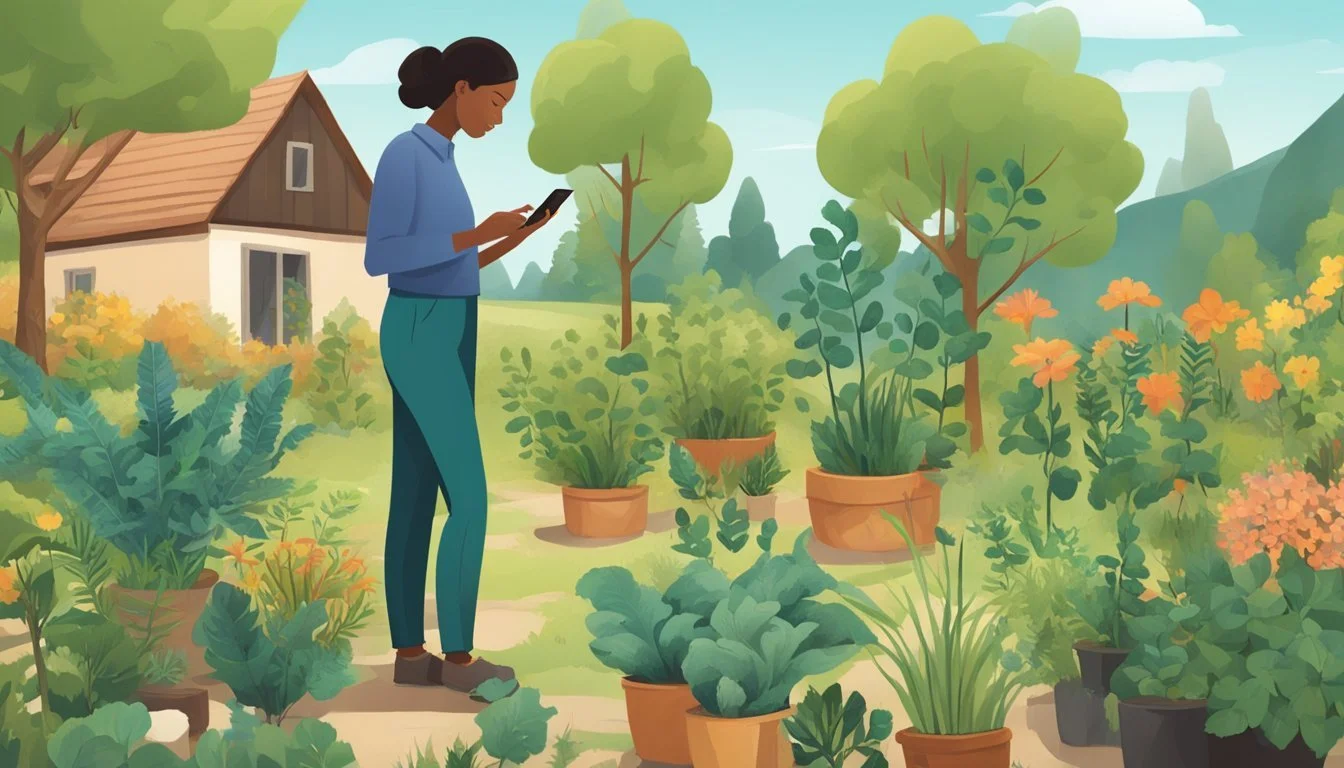The Ultimate Guide to Using a Plant Identification Mobile App
Maximizing Homestead and Flora Management
Navigating the world of homesteading and local flora management has been revolutionized by the advent of plant identification mobile apps. These tools serve as digital guides, enabling users to identify unknown plants with ease. Whether homesteaders aim to expand their garden, educators seek to inform students about native species, or hikers wish to learn more about their natural surroundings, these apps provide fast, accurate identifications. With the simple act of taking a photo, users gain access to a wealth of information about plant species, care requirements, and potential uses, all at their fingertips.
For the modern homesteader, an app dedicated to plant identification isn’t just a convenience, it’s a vital resource. It aids in distinguishing between beneficial plants that can support a self-sufficient lifestyle and invasive or toxic species that could harm their ecosystem. Incorporating this technology into everyday flora management allows for a more educated approach to planting and harvesting, enabling better decision-making and a more harmonious interaction with the local environment.
The ultimate guide to using a plant identification app involves understanding how artificial intelligence bridges the gap between amateur enthusiasm and botanical expertise. These applications harness extensive databases and advanced algorithms to match user-provided images with thousands of plant profiles. The result is a rich learning experience that enhances the user's understanding of botany and supports the sustainable management of their homestead's natural resources.
Getting Started with Plant Identification Apps
Embarking on the journey of plant identification through mobile apps can revolutionize the way one engages with homesteading and local flora management. It brings technology to the garden, allowing users to accurately identify plants directly from their Android or iOS devices.
Choosing the Right Plant Identification App
When selecting a Plant Identification App, users should consider several factors:
Ease of Use: The app should have an intuitive interface, making identification straightforward.
Database Size: A larger database means a greater chance of successfully identifying a plant.
Accuracy: Look for an app that is renowned for providing accurate results.
Additional Features: Some apps provide extra information such as plant care tips or disease diagnosis.
Cost: Decide whether a free app meets your needs or if a paid app offers value.
User Reviews: Check user ratings on the App Store (for iOS) or Google Play Store (for Android).
For example, popular apps like PlantSnap and LeafSnap are known for their extensive databases and AI-driven identifications.
Understanding the Basics of Plant Identification
To use plant identification apps effectively, users should master a few fundamental steps:
Take a Clear Photograph: Capture a high-quality image focusing on distinct plant features such as leaves, flowers, or stems.
Ensure Good Lighting: A well-lit subject brings out the defining characteristics necessary for an accurate identification.
Follow Instructions: Each app may have specific guidelines for photo submission—adhering to these helps improve result accuracy.
For instance, instructions may include using the smartphone's camera to zoom in on a particular part of the plant and taking the picture with the plant part in focus.
Exploring Features of Top Plant Identification Apps
When selecting a plant identification app, features such as image recognition capabilities, comprehensive species databases, and community support are crucial for homesteaders and enthusiasts managing local flora.
Image Recognition and Accuracy
PlantSnap and LeafSnap are known for their image recognition prowess, utilizing artificial intelligence (AI) algorithms to analyze photos of plants. PlantSnap Pro offers enhanced capabilities for more precise identifications. Users must focus on specific parts of the plant—be it a flower, leaf, or fruit—and the app's accuracy is often dependent on the quality of the submitted image. LeafSnap distinguishes itself with simplicity and a highly accurate identification process, although it may have intrusive ads.
Database and Species Coverage
The value of a plant identification app lies in its database size and species coverage. PictureThis and PlantNet excel in this area, covering a wide array of species from around the globe. Seek by iNaturalist uses the vast data from its parent app, iNaturalist, which is crowd-sourced and constantly updated with new findings. This means users are more likely to find matches even for less common species.
Community and Expert Contributions
The strength of a community can enrich an app’s usefulness beyond its algorithmic capabilities. iNaturalist and Seek not only rely on image recognition but also leverage a network of enthusiastic users and experts for verifications and contributions, enhancing the app's accuracy and reliability. This community aspect allows users to connect with others and learn from experts, which is particularly useful for homesteaders seeking specific cultivation advice.
How to Use Plant Identification Apps Effectively
Plant identification apps are tools that leverage technology to help users identify a variety of plants with accuracy and ease. They serve as a digital extension of traditional plant education, providing instant access to a wealth of plant care knowledge and observations from a global community.
Step-by-Step Guide to Identifying Plants
Capture a Clear Photo: Take a clear, well-lit photograph of the plant you wish to identify. For optimal results, focus on a single leaf or flower, avoiding blurred or shadowed areas.
Upload and Identify: Open your chosen plant identification app and upload the photo. The app's artificial intelligence will compare your photo against its database to provide an identification.
Review Results: Examine the given results. The app may offer a single identification or multiple possibilities. Check the accompanying information to verify the accuracy of the match.
Making the Most of the App Features
Explore the Database: Familiarize yourself with the app's database which may include detailed information on plant species, care requirements, and environmental preferences.
Use Advanced Functions: Utilize the app's advanced features such as the ability to log personal observations, access expert articles on plant care, or explore interactive maps showing regional flora.
Settings Tweaks for Better Accuracy: Adjust the app settings if available, to refine search parameters based on location, flowering period, or other relevant factors to improve identification accuracy.
Contributing Your Observations to the Community
Share Observations: After identifying plants, users have the option to share their observations with the app's community. This can contribute to citizen science projects and help improve the app's database.
Engage with Other Users: Some apps offer social features that allow you to engage with other plant enthusiasts, exchanging tips on identification and plant care.
Participate in Educational Programs: Many apps are connected with educational programs aimed at spreading knowledge about local flora. Contributing data from personal observations can support these initiatives.
Using mobile apps for plant identification can be a rewarding and educational practice, significantly aiding homesteaders and enthusiasts in local flora management. While the technology is advanced, a user’s active participation in both identification and community contributions enriches the experience for all involved.
Integrating Plant Identification in Homesteading
For homesteaders, the precise identification and management of plants is integral in cultivating a sustainable lifestyle that encompasses both effective gardening and responsible livestock care. Implementing a reliable plant identification system is not just a matter of organization—it is a cornerstone of modern homesteading.
Tracking and Managing Your Plants
Homesteaders often manage a diverse range of plants, including vegetables, fruits, herbs, and ornamental species. A plant identification app enables them to track and catalog their plants efficiently. They can maintain detailed records of plant species, growth stages, and health conditions. By documenting their garden's progress, farmers can make informed decisions about crop rotation and soil management while preserving biodiversity.
Plant Types: Vegetables | Fruits | Herbs
Growth Stages: Seedling | Maturing | Harvest
Health Conditions: Thriving | Pests Affected | Diseased
Using Apps for Gardening and Livestock Care
Gardening apps equip homesteaders with the ability to identify plants that are beneficial or harmful to their crops and livestock. For instance, they could discover plant species that are ideal companions for their garden vegetables or those that might be toxic to their farm animals. The apps function as an essential tool that assists them in creating a balanced ecosystem, promoting a holistic approach to plant and animal health.
Companion Planting: Onions with carrots to repel pests.
Livestock Forage: Identifying safe and nutritious plants for grazing.
Pest Control: Recognizing natural plant deterrents.
Learning and Educating Others on Local Flora
Homesteading today transcends the bounds of personal use and ventures into educating the community on local flora. With the use of identification apps, homesteaders can deepen their understanding of native plants and their roles in the local ecosystem. They are equipped to share this knowledge with their peers, contributing to wildlife preservation and environmental awareness.
Educational Topics: Native Species | Invasive Plants | Pollinator-Friendly Gardens
Sharing Methods: Workshops | Community Gardens | Social Media
By integrating plant identification apps into their daily routines, homesteaders refine their methods in agriculture, contribute to the conservation of local ecosystems, and foster an informed community mindful of the environmental impacts of gardening and farming practices.
Advanced Plant Identification Techniques
Advanced plant identification techniques enable individuals to accurately distinguish between various types of vegetation, like trees, herbs, and weeds, assess plant health and understand botanical terms. These methods are vital for homesteaders and local flora managers for safe foraging and effective flora management.
Identifying Trees, Herbs, and Weeds
To accurately identify trees, users should examine characteristics such as leaf shape, bark texture, and the pattern of flowers or fruit. Apps employing deep learning algorithms can instantly process these visual cues and provide users with a plant's name and associated information. For herbs and weeds, distinctive features like leaf vein patterns, flower morphology, and growth habits are important markers for identification.
Understanding Toxicity and Foraging
Toxicity Assessment: Recognizing toxic plants is essential for foragers. An advanced app can help differentiate between safe and harmful plants by analyzing foliage, berries, or flowers. This reduces the risk of accidental poisoning.
Foraging Guidelines: For edible wild plants, knowledge of seasons, plant parts used, and harvesting techniques ensures sustainable practices. Advanced apps may offer detailed foraging information, ensuring users pick only what is safe and legal to consume.
Botanical Terminology and Advanced Identification
Familiarity with botanical terminology enhances the communication between the app and the user. It allows for a deeper understanding when the app references terms like “pinnate leaves” or “umbels”.
Leaf Identification: Knowing terms related to leaf morphology, such as lobed, serrated, or compound, strengthens plant recognition skills.
Advanced Identification Techniques: These may include assessing the plant’s habitat, leaf arrangement, and using dichotomous keys for precise identification. An app that incorporates these methods provides users with a comprehensive tool for mastering local flora management.
Benefits of Using Plant Identification Apps
Plant identification apps offer a host of advantages, from enhancing personal gardening efforts to bolstering environmental understanding. They serve as powerful tools for homesteaders and educators alike.
Personal and Community Benefits
For Gardeners and Homesteaders:
Identification and Plant Care: Apps such as PlantSnap simplify the discovery and care of a variety of plant species. Users can learn optimal watering schedules, soil preferences, and sunlight requirements.
Community Sharing: These digital platforms enable one to share findings with a broader community, fostering a space for both novice and experienced gardeners to connect and exchange knowledge.
For Students and Educators:
Enhanced Learning Experiences: Apps make botany education interactive, supporting students to identify local flora and engage in hands-on gardening projects.
Civic Engagement: Educators can facilitate student participation in citizen science through plant identification apps, promoting both community involvement and scientific inquiry.
Environmental and Educational Advantages
For Citizen Scientists:
Biodiversity Tracking: Through apps like iNaturalist, citizen scientists record and monitor plant species, aiding in conservation efforts and environmental databases.
Data Sharing: Users contribute to communal databases, which can be vital for researchers studying ecological trends and changes.
For Environmentalists and Conservationists:
Ecosystem Management: Understanding local flora helps in ecosystem preservation and management, enabling individuals to identify invasive species and assist in habitat restoration.
Educational Outreach: Environmentalists utilize these apps for educational outreach, raising awareness about the importance of plant biodiversity and ecosystem health.
Overcoming Challenges and Issues
When utilizing plant identification apps, users may encounter technical issues or have concerns regarding privacy. This section guides users through common app-related problems and outlines how to navigate privacy and data management effectively.
Dealing with Common App Problems
Plant identification apps rely on technology that may not always function perfectly. Users sometimes face challenges such as inaccurate results or app malfunctions. To enhance accuracy, one should ensure that photos are clear and well-lit. Most apps have guidelines on how to take the best picture for identification purposes. If an app is not working as expected, check for updates or reinstall the app to resolve any hidden bugs.
Troubleshooting Steps:
Ensure the camera lens is clean.
Follow the app's photo-taking guidance.
Update the app regularly.
Reinstall the app if persistent issues occur.
Privacy and Data Management
Privacy is a crucial consideration when using any application. It's important for users to review the app's privacy policy and terms of use before submitting personal information or photos. One should be aware of what data is being collected and how it is used. If uncomfortable with an app's policy, users might consider looking for an alternative with more agreeable terms.
Best Practices:
Review the app’s privacy policy and terms of use.
Limit personal information shared.
Understand how submitted data is handled.
Opt out of data collection when possible.
Future of Plant Identification Technology
The landscape of plant identification has been transformed by the advent of artificial intelligence (AI) and machine learning, and its future appears even more promising. With a trajectory aiming for ever-higher accuracy, the next generation of mobile apps for plant identification will integrate cutting-edge technologies to offer unparalleled assistance to homesteaders and local flora managers.
Technological Advances:
Enhanced Image Recognition: Future apps will likely move beyond single image analysis, incorporating sequence and multi-modal imagery to provide a more comprehensive understanding of a plant.
Integration of Habitat Data: Marrying imagery with environmental data will refine identification processes, enabling a deeper, ecological context-based recognition.
Accuracy and Learning:
As these applications continue to amass data, the AI becomes more refined, leading to a more accurate plant identification process. Over time, machine learning algorithms adjust and improve with every new data point, ensuring a constantly evolving and improving identification system.
User Experience:
Interfaces will become more intuitive. Users can expect a seamless integration of identification tools into their daily management of homesteading projects or local flora conservation efforts.
Interaction with these apps may extend into the realm of augmented reality (AR), offering an interactive, informative, and engaging experience.
Applications:
Homesteaders will use these tools to identify optimal plant species for their gardens based on local climate and soil conditions.
Ecologists and land managers can utilize AI-driven apps for monitoring invasive species and protecting native plant diversity.
In conclusion, the fusion of AI and ecology in mobile applications is just beginning to unveil its potential. The future promises not only technological innovation but also a fundamental shift in the relationship between humans and the natural environment.
Appendix: Recommended Plant Identification Apps
In this appendix, readers will find a curated selection of plant identification apps tailored to different levels of expertise and regional focuses. Each app offers unique features that cater to various user needs, from the novice gardener to the seasoned botanist.
Apps for Beginners and Students
PlantSnap: This AI-powered app is excellent for beginners, providing instant identification of plants with a simple photo. It's ideal for gardeners and students looking to enhance their understanding of local flora.
PictureThis: Boasting a user-friendly interface, PictureThis is suitable for students and novice users, facilitating plant identification and fostering a community of plant enthusiasts.
NatureID: An app that allows beginners to quickly identify plants and receive care tips, making it a handy tool for new plant owners.
Expert-Level Apps and Tools
LeafSnap: Recognized for its accuracy, LeafSnap serves experts who require precise identifications. Its attractive interface is coupled with an extensive database for in-depth plant study.
SmartPlant: For the expert with a home garden, SmartPlant not only identifies plants but also provides personalized care reminders.
Wild Edibles Forage: For experts interested in foraging, this app helps identify edible plants and provides detailed information on preparation and potential lookalikes.
Region-Specific and Specialized Apps
Pl@ntNet Plant Identification: This app is recommended for those seeking to identify plants specific to their region, offering quick and straightforward identifications.
From Seed to Spoon: Tailored to the gardener focused on vegetable planting, this app assists with plant care from seeding to harvesting, with region-specific advice.
Blossom: Blossom is a useful tool for managing a variety of plants within a particular locale, offering identification and care guidelines that are specific to the user's regional climate.






